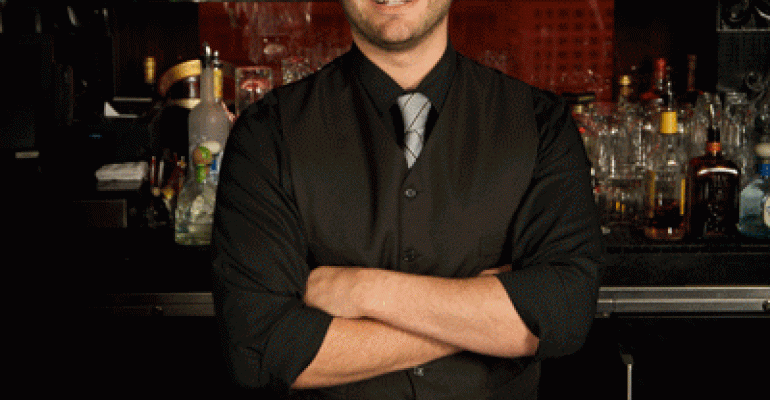A bottled carbonated Negroni is a gas for cocktail cognoscenti and newbies alike at Harry Denton’s Starlight Room in San Francisco.
“Bartending is all about the show,” said Joel Teitelbaum, bar manager of the posh spot owned by Kimpton Restaurants. “You crack open the bottle and pour it over ice and it fizzes up like a soda. That engages a broad range of people, including those who would never order a Negroni because of the ingredients.”
The cocktail made of gin, sweet vermouth and Campari gets its sparkle from a hand-held beverage carbonator, essentially a bottle topped with a screw-threaded wand that holds a carbon dioxide cartridge. The carbonator is filled with the liquors, the wand is screwed back onto the bottle and the gas is forced into the liquid in seconds. The cocktail is then transferred into 6.3-ounce bottles and closed with a manual soda-bottle capper.
“This is the under-$100 way of getting into the carbonating game,” Teitelbaum said. “It works fine. You can make 60 bottles of this stuff in a half hour.”
Drinks with built-in bubbles is a trendy topic for molecular mixologists, bartenders who bring scientific techniques to the realm of shakers and strainers. Members of that club include Craig Schoettler of The Aviary in Chicago and Jeffrey Morgenthaler of Clyde Common in Portland, Ore. The latter has a Bottled Sparkling Americano on the cocktail list.
“Those guys make it look easy, but there is actually more involved than you would think in terms of the physics of CO2 and how it dissolves into alcohol,” Teitelbaum said.
He recommended working with extremely cold liquors because low temperature slow molecular motion in the liquid and allows the CO2 to dissolve more quickly. He keeps the liquors for his carbonated creations in a wine refrigerator at 34 degrees Fahrenheit.
It is also important to dilute the cocktail slightly.
“If you figure out how much water is being added into the cocktail when you stir it or shake it and add that much before you carbonate, it holds almost twice as much CO2,” Teitelbaum said.
His Negroni recipe, enough to fill the carbonator, is one cup each of the three liquors plus about a half a cup of very cold water. “That’s the amount of water I figure you would get if you stirred three cups of Negronis,” he said.
Compared to a still Negroni, the carbonated version has a slightly different taste “because of the way the cocktail physically hits your palate,” Teitelbaum said. “But at the end of the day, after you swallow it, it’s still a Negroni.”
Teitelbaum is in the midst of other carbonation experiments. “Drinks with juice don’t look like they are going to work,” he said. “They don’t hold carbonation so well and they taste a little off, like old orange juice that has started to ferment.”
Gin seems to be the liquor that tastes best with bubbles, compared to bourbon and rye whiskey, which are disappointing.
“A carbonated Manhattan is not a great thing,” Teitelbaum said. “But a carbonated Negroni is really good.”

